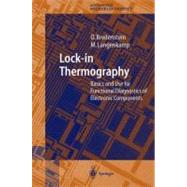
What is included with this book?
| 1. Introduction | 1 | (6) | |||
| 2. Physical and Technical Basics | 7 | (32) | |||
|
7 | (6) | |||
|
13 | (7) | |||
|
20 | (4) | |||
|
24 | (5) | |||
|
29 | (3) | |||
|
32 | (3) | |||
|
35 | (4) | |||
| 3. Experimental Technique | 39 | (30) | |||
|
39 | (10) | |||
|
49 | (6) | |||
|
55 | (7) | |||
|
62 | (7) | |||
| 4. Theory | 69 | (46) | |||
|
69 | (6) | |||
|
75 | (7) | |||
|
82 | (5) | |||
|
87 | (8) | |||
|
95 | (20) | |||
|
98 | (7) | |||
|
105 | (10) | |||
| 5. Measurement Strategies | 115 | (28) | |||
|
115 | (6) | |||
|
121 | (4) | |||
|
125 | (9) | |||
|
134 | (4) | |||
|
138 | (5) | |||
| 6. Typical Applications | 143 | (26) | |||
|
143 | (7) | |||
|
150 | (10) | |||
|
151 | (6) | |||
|
157 | (3) | |||
|
160 | (3) | |||
|
163 | (6) | |||
| 7. Summary and Outlook | 169 | (4) | |||
| References | 173 | (8) | |||
| A. Thermal and IR Properties of Selected Materials | 181 | (2) | |||
| B. Digital Micrograph Scripts for FFT Deconvolution | 183 | (2) | |||
| List of Symbols | 185 | (4) | |||
| Abbreviations | 189 | (2) | |||
| Index | 191 |
The New copy of this book will include any supplemental materials advertised. Please check the title of the book to determine if it should include any access cards, study guides, lab manuals, CDs, etc.
The Used, Rental and eBook copies of this book are not guaranteed to include any supplemental materials. Typically, only the book itself is included. This is true even if the title states it includes any access cards, study guides, lab manuals, CDs, etc.